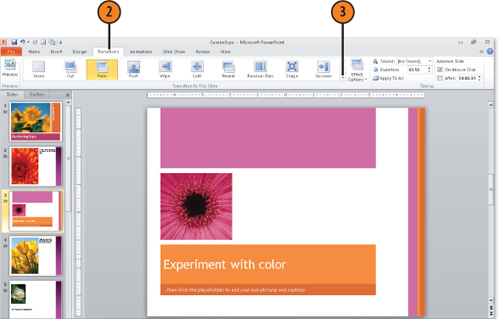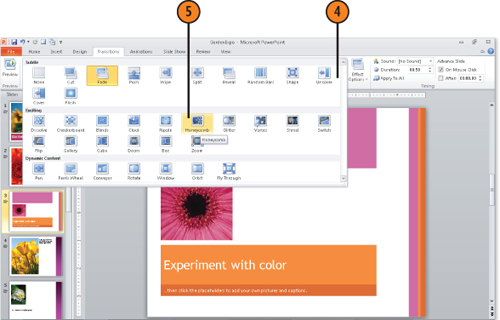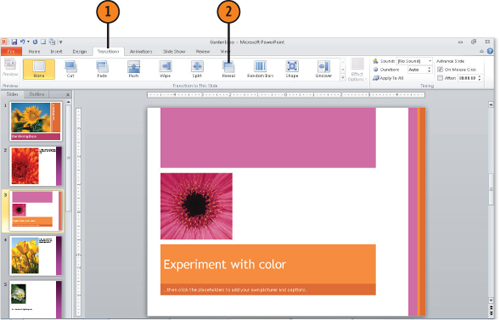You can use a gallery of preset animations to apply a
transition effect that occurs when a new slide is displayed. These
transition effects are divided into categories such as Subtle, Exciting,
or Dynamic Content. You can apply a different effect between each pair
of slides or one effect that occurs every time a new slide appears.
1. Apply a Transition Scheme to a Slide
If you want a transition to occur when a particular slide appears, display that slide.
Click the Transitions tab.

Click the More button on the Transitions gallery.
Move your mouse pointer over the various effects to see them previewed on your slide.
Click a transition effect to apply it to that slide.

Note:
If you apply a transition to a
slide and then decide you don’t want to include the transition anymore,
select the slide and then click the None option. (This is the first
item in the Transition gallery.)
2. Apply a Transition to All Slides
Click the Transitions tab.
Apply a transition scheme to a slide following the steps in the previous task.

Click the Apply To All button. Stars appear next to all slides in the Slide pane to indicate a transition is applied.

Note:
If you apply a transition
to one slide and want to then apply it to all slides, first display
that slide in Normal view. Then, on the Animation tab, click Apply To
All in the Timing group.